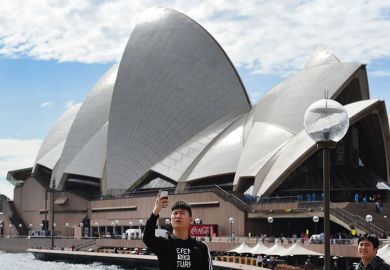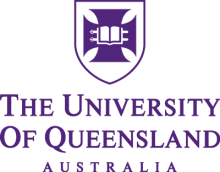While foreign postgraduates are increasingly bankrolling research at Australia’s most prestigious universities, the role that research plays in their learning experience appears to be diminishing.
International enrolments at the Group of Eight universities have exploded in recent years, as institutions harvest foreign tuition fees to compensate for flatlining government funding.
New data suggest that this enrolment surge has been almost exclusively in postgraduate taught rather than research programmes, and that students are increasingly being instructed by academics who are not active researchers.
The number of international students enrolling in research higher degree programmes at Go8 universities’ Australian campuses declined marginally between 2012 and 2016, according to customised Education Department data obtained by Melbourne demographer Bob Birrell.
Over the same period, the number of foreigners commencing postgraduate “coursework” or taught programmes – mostly master’s degrees costing between A$35,000 and A$50,000 (£20,000-£28,000) a year – ballooned by 69 per cent.
By 2016, the Go8 was admitting 11 new international postgraduate taught students – up from six in 2012 – for every new overseas research higher degree candidate. The bulk of this surge came from East Asia, with the group more than doubling its intake of Chinese postgraduate taught students to 14,600. This compared with about 500 Chinese research postgraduates.
Among non-Go8 institutions, the number of commencing Chinese master’s students rose by just 3 per cent over the same period. The trend was reflected in Chinese undergraduate commencements, with numbers increasing by 121 per cent at Go8 universities and 13 per cent elsewhere.
Dr Birrell said that almost all of the Go8’s increase in international commencements had come from China. He said that he had been surprised by the surge in enrolments for taught master’s programmes, which had traditionally predominated in less expensive universities.
Go8 universities were trading on their global top-100 status by attracting “a significant fraction of very wealthy Chinese”, Dr Birrell said.
The University of Sydney did this most effectively, increasing its intake of Chinese postgraduate taught students by 181 per cent to more than 4,100 by 2016. Monash University and the University of Melbourne each saw increases of about 150 per cent to around 2,600 students, while the University of Queensland almost doubled its intake to about 1,500.
Dr Birrell said that universities had conscripted international students “to the neglect of their teaching effort”. The Go8 rejected this, saying that senior Education Ministry officials in Beijing had praised the quality of its education.
“Their graduates return home well educated and very employable,” said executive director Vicki Thomson. “The fact that we have seen growth in this market would suggest that students and their families see the value proposition from what the Go8 universities have to offer.”
However, Education Department staffing statistics offer scant evidence that Australian universities have invested their international tuition fee windfall in teaching resources. In full-time equivalent terms, the Go8 institutions increased their overall staffing levels by just 1.5 per cent between 2012 and 2016.
Their full-time equivalent student numbers rose by 14 per cent over this period, with international students contributing 78 per cent of this rise. The statistics also suggest a shift towards non research-active staff, with the Go8 institutions increasing the number of casual employees by 7 per cent and tenured teaching-only academics by 17 per cent.
Across the sector, staffing levels rose 6 per cent to accommodate a 15 per cent increase in student numbers.
Register to continue
Why register?
- Registration is free and only takes a moment
- Once registered, you can read 3 articles a month
- Sign up for our newsletter
Subscribe
Or subscribe for unlimited access to:
- Unlimited access to news, views, insights & reviews
- Digital editions
- Digital access to THE’s university and college rankings analysis
Already registered or a current subscriber?










